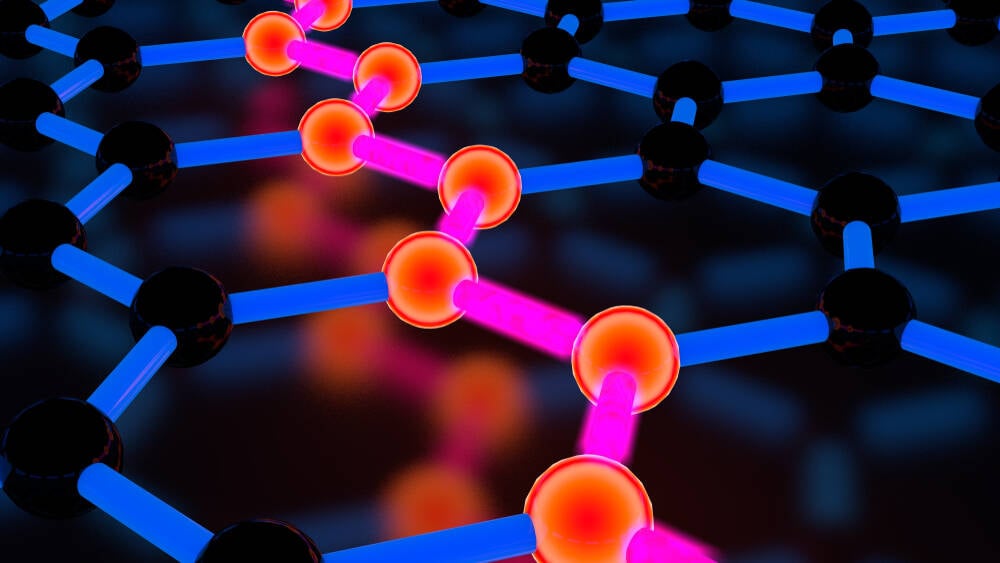First Functional Graphene Semiconductor Could Power Future Chips

Researchers say they have discovered a way to produce semiconductors using graphene that could - at some stage further down the road - deliver high performance devices able to outmatch those made from silicon.
Graphene has long held out promise as a potential material that could outperform silicon in terms of electron mobility, but efforts to produce high-quality semiconductors from it have proved unsuccessful, leading research efforts to shift towards other two-dimensional (i.e. single atom thick) materials.
The issue was that graphene is a gapless semiconductor, lacking a so-called "bandgap," a gap between low-energy and high-energy bands that electrons are induced to cross in the useful semiconductors found in computer chips. One of the reasons that silicon carbide (SiC) components are so popular, for example, is because of their wide bandgap.
Now, a group of researchers claims to have developed a method for producing a layer of graphene on a silicon carbide (SiC) wafer to form a semiconductor with a band gap of 0.6 eV and with room temperature electron mobility larger than that for other 2D semiconductors.
The research was carried out by a team at the Georgia Institute of Technology in Atlanta and Tianjin University in China, with Regents’ Professor of physics Walter de Heer supervising the work.
The group disclosed their discovery in a jargon-heavy article published in science journal Nature with the catchy title of "Ultrahigh-mobility semiconducting epitaxial graphene on silicon carbide." It involves what the researchers like to call a quasi-equilibrium annealing method, which produces high-quality semiconducting epigraphene (SEG) on an underlying SiC substrate.
Epigraphene is graphene that spontaneously forms on silicon carbide crystals when silicon is sublimated from the surface at high temperatures, the article explains, resulting in a carbon-rich surface that recrystallizes into graphene.
The researchers' trick was to form their epigraphene in a more controlled environment by sandwiching two SiC chips so that the silicon surface of the top chip was opposite the carbon surface of the bottom one, according to Professor de Heer and his colleagues.
When heated, carbon atoms are transported from the carbon surface to the silicon surface to form a buffer layer chemically bonded to the SiC, which means that, in principle, it should be possible to produce wafer-scale single-crystal SEG, according to the researchers.
"Basically, what we found is a high mobility (high quality if you will) 2D semiconductor that can be used as a 2D electronic material, which are sought after for their expected superior performance," De Heer told The Register.
High mobility means the electrons can move with less resistance through the material, which has been suggested could lead to higher performance transistors to replace silicon and potentially give a boost to processor chips as well.
"We are considering monolithic devices where semiconducting graphene is seamlessly connected to conventional semi-metallic graphene, which will greatly reduce resistances of the devices and which will allow much smaller devices to be made," De Heer said. "Furthermore, these seamlessly integrated device structures will enable us to utilize the wave properties of the electrons which would be a paradigm shift in electronics."
According to the paper, graphene can also be used in components that operate in the terahertz part of the electromagnetic spectrum, while few other materials can. Terahertz frequencies have been suggested for use in communications, with one standards body even looking into their potential use in 6G.
- AI offers some novel crystal materials that could form future chips, batteries, more
- Graphene foam is the future of IoT power, maybe
- MIT boffins build battery alternative out of cement, carbon black, water
- Move over, graphene. There's a new super-material in town: Graphullerene
The researchers are now looking at ways to reliably produce this SEG material at scale and make it commercially viable, with De Heer saying there do not seem to be any major hurdles to producing it on the 1 inch wafer scale.
However, it seems we should not hold our breath waiting to see graphene-based semiconductors in production.
"This depends a bit on what you consider production," De Heer told us. He compared where his team is now with the Wright brothers' first flight, and said that it took about 35 years for the first commercial flight across the Atlantic, and a lot happened in between.
"If semiconducting graphene ends up being important, it may take a long time to fully develop," he conceded. ®
From Chip War To Cloud War: The Next Frontier In Global Tech Competition
The global chip war, characterized by intense competition among nations and corporations for supremacy in semiconductor ... Read more
The High Stakes Of Tech Regulation: Security Risks And Market Dynamics
The influence of tech giants in the global economy continues to grow, raising crucial questions about how to balance sec... Read more
The Tyranny Of Instagram Interiors: Why It's Time To Break Free From Algorithm-Driven Aesthetics
Instagram has become a dominant force in shaping interior design trends, offering a seemingly endless stream of inspirat... Read more
The Data Crunch In AI: Strategies For Sustainability
Exploring solutions to the imminent exhaustion of internet data for AI training.As the artificial intelligence (AI) indu... Read more
Google Abandons Four-Year Effort To Remove Cookies From Chrome Browser
After four years of dedicated effort, Google has decided to abandon its plan to remove third-party cookies from its Chro... Read more
LinkedIn Embraces AI And Gamification To Drive User Engagement And Revenue
In an effort to tackle slowing revenue growth and enhance user engagement, LinkedIn is turning to artificial intelligenc... Read more

